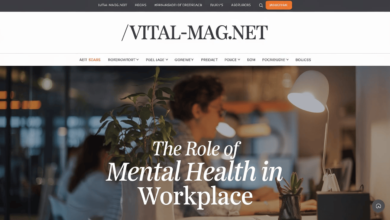Essential Suited Assessment Tips for Optimal Decision Making

Understanding Suited Assessments
Suited Assessment Tips are specialized evaluation tools designed to measure an individual’s abilities, skills, and personality traits in relation to specific roles or environments. These assessments play a crucial role in various contexts, such as education and employment, by providing a comprehensive understanding of a person’s aptitude for specific tasks or responsibilities. The purpose of suited assessments is to ensure that individuals are matched with positions that align with their strengths, thereby enhancing their performance and overall satisfaction.
In the realm of education, suited assessments aid educators in identifying students’ learning styles, interests, and academic potential. By understanding the unique characteristics of each student, educators can tailor their teaching methods to better cater to individual needs, fostering an environment conducive to learning. Similarly, in the workplace, these assessments help employers select candidates whose skills and personality align with the company’s culture and job requirements, ultimately improving team dynamics and productivity.
Key components that contribute to effective suited assessment strategies include the clarity of assessment objectives, the validity and reliability of the assessment tools, and the interpretive frameworks used to analyze results. A well-defined objective ensures that the assessment focuses on relevant attributes, while valid and reliable tools guarantee that the outcomes are both accurate and consistent. Furthermore, employing structured interpretive frameworks helps stakeholders make informed decisions based on the assessment results, elucidating how an individual’s profile fits the demands of a particular role.
In conclusion, understanding suited assessments is essential for optimizing decision-making in educational and professional settings. By recognizing the importance of effectively matching individuals to roles that suit their skills and characteristics, organizations can unlock the potential for success and foster environments where both individuals and teams thrive.
Benefits of Suited Assessments
Suited assessments offer numerous advantages that can significantly impact both individuals and organizations. One of the primary benefits is their ability to facilitate better hiring decisions. By employing these assessments during the recruitment process, employers can gain valuable insights into candidates’ skills, personalities, and cultural fit, resulting in enhanced decision-making. For instance, a study conducted by the Harvard Business Review revealed that companies utilizing structured assessments experienced a 24% increase in the likelihood of hiring high-performing employees.
In addition to improving hiring outcomes, suited assessments contribute to increased job satisfaction among employees. When individuals are placed in roles that align with their strengths and preferences, they are more likely to feel engaged and motivated. According to a Gallup poll, organizations that focus on matching employees to their suited roles report higher levels of employee engagement, which directly correlates with improved productivity and reduced turnover rates.
Furthermore, suited assessments can lead to improved performance at both the individual and team levels. By identifying the specific areas where employees excel, organizations can tailor development programs that enhance skills and competencies. A report from the Society for Human Resource Management indicated that companies that implement competency-based assessments observe a 30% increase in team performance, as employees work more effectively alongside one another when their roles complement each other’s strengths.
Additionally, suited assessments enhance team dynamics, fostering collaboration and communication among team members. By understanding the diverse strengths and working styles within a team, leaders can better allocate tasks and responsibilities, ultimately creating a more cohesive work environment. Case studies have shown that implementing suited assessments can lead to a 40% improvement in project outcomes due to better team collaboration and synergy.
Key Elements of Effective Suited Assessments
In the realm of assessment, several core elements contribute to the effectiveness of suited assessments. Chief among these are validity, reliability, fairness, and clarity. Understanding these components is pivotal for practitioners aiming to enhance their decision-making processes through well-designed evaluations.
Firstly, validity refers to the extent to which an assessment measures what it purports to measure. An assessment tool must align closely with the intended outcomes and relevant competencies to ensure that it effectively evaluates the specific attributes desired. For instance, if assessing a candidate’s leadership qualities, the assessment should include tasks and scenarios that genuinely reflect leadership challenges. This alignment not only provides a clear context but also increases the accuracy of the evaluation, making validity an indispensable element of suited assessment tips.
Reliability is another crucial aspect, indicating the consistency of assessment results over time. An effective assessment should yield similar outcomes under consistent conditions, thus providing confidence in the results. To enhance reliability, multiple assessment methods can be employed or the same method can be repeated under identical circumstances, allowing for a comprehensive understanding of the individual’s abilities.
Fairness is paramount in assessments, underscoring the necessity that all individuals have equal opportunity to demonstrate their competencies. This includes ensuring that assessments are free from bias and accessible to all participants. It is essential for practitioners to be vigilant about any potential disadvantages that could hinder a fair evaluation process, as fairness aligns closely with the overall integrity of the assessment.
Finally, clarity in assessment techniques cannot be overstated. Assessors should ensure that instructions and evaluation criteria are transparent and easy to understand. When candidates are clear on what is expected of them, it enhances the assessment experience and improves the chances of obtaining accurate results. In the expansive arena of suited assessment tips, the incorporation of these elements—validity, reliability, fairness, and clarity—serves to strengthen the efficacy of evaluation processes, leading to more informed decision making.
Common Assessment Tools and Strategies
Various tools and methods are employed in suited assessments to aid in effective decision-making processes. Psychometric tests are one of the most commonly used instruments in this realm. These assessments measure an individual’s cognitive abilities, personality traits, and behavioral styles. They are designed to provide insights into how a person may fit within a particular role or organizational culture. Commonly recognized psychometric test providers include the Myers-Briggs Type Indicator and the Wonderlic Personnel Test.
Interviews remain a traditional yet vital strategy for authentic assessments. They can be structured, semi-structured, or unstructured, depending on the specific job requirements. Structured interviews, which consist of standard questions posed to all candidates, tend to yield more reliable comparisons among applicants. On the other hand, unstructured interviews allow for greater flexibility, enabling interviewers to explore areas of interest that may not have been initially considered. The purpose of an interview is to gather qualitative data about a candidate’s experience, motivations, and suitability for a role.
Skills assessments serve as another effective tool in suited assessments. These can include technical tasks and practical exercises relevant to the job in question. For example, coding challenges for software engineers or case studies for consultants can provide valuable insights into a candidate’s competencies. Skills assessments not only evaluate candidates’ technical abilities but also offer a glimpse into their problem-solving approaches and teamwork capacities.
Finally, situational judgment tests (SJTs) play a crucial role in assessing a candidate’s problem-solving and decision-making skills in hypothetical scenarios relevant to the job. These assessments gauge how individuals would respond to various situations they may encounter within their roles, making them particularly useful in evaluating soft skills. Platforms like Sova Assessment and Criteria can be valuable resources for organizations looking to implement these assessment methods effectively.
Preparing for a Suited Assessment
Preparing for a suited assessment is crucial for achieving optimal results. A key element of this preparation involves understanding the assessment format thoroughly. Familiarizing oneself with the type of questions and the overall structure can significantly reduce unexpected surprises, allowing for a more focused approach. This knowledge enables candidates to devise targeted study techniques and practice strategies that are aligned with the assessment’s nature.
Practicing relevant skills is another essential step while preparing for a suited assessment. Engaging in mock assessments or practice tests can help individuals hone their abilities, making them more proficient in tackling tasks similar to those they will encounter during the real evaluation. This practice also facilitates the identification of areas needing improvement, enabling candidates to allocate time effectively to rectify weaknesses.
Effective time management during preparation is paramount. Creating a study timetable that outlines specific goals and deadlines can help ensure that all topics are covered thoroughly and that candidates are not overwhelmed as the assessment date approaches. By breaking the preparation into manageable chunks, individuals can maintain their motivation and gauge their progress regularly.
Equally important is approaching assessments with the right mindset. Developing a positive attitude can greatly influence performance, as self-confidence typically enhances execution during high-pressure situations. Techniques such as visualization, deep breathing exercises, and mindfulness can reduce anxiety, helping individuals maintain their composure and focus during the assessment. Incorporating regular physical activity and a healthy diet may also contribute to improved emotional well-being, further enhancing overall preparedness.
By integrating these suited assessment tips into the preparation routine, individuals can significantly improve their prospects of success, ensuring that they approach their assessments with confidence and competence.
How to Interpret Assessment Results
Interpreting the results of suited assessments is crucial for both candidates and employers, as these assessments provide valuable insights into an individual’s strengths, weaknesses, and overall compatibility with specific roles. A thorough understanding of the results enables better decision-making processes, ultimately leading to improved workforce performance. For candidates, effective interpretation of their assessment results can foster personal and professional growth, while employers can utilize these insights to make informed hiring or talent-development decisions.
When candidates receive their assessment results, they should focus on identifying patterns that highlight their core strengths and areas needing improvement. For instance, an assessment may reveal strong analytical skills, suggesting suitability for data-intensive roles, while also highlighting interpersonal skills that might require further development. Candidates should engage in self-reflection to understand how these insights align with their career goals and aspirations. This reflective process can empower them to take proactive steps toward addressing weaknesses, such as seeking additional training or mentorship.
For employers, assessment results are instrumental in shaping talent acquisition strategies and employee development programs. By analyzing the aggregated data from assessments, organizations can pinpoint the traits and capabilities needed for specific positions. This understanding aids in crafting precise job descriptions and evaluating candidates more effectively. Additionally, review sessions can be organized to discuss these assessment findings with candidates. A constructive feedback session can provide individuals with clarity on their results, fostering a supportive environment while promoting transparency and trust.
Furthermore, it is essential that employers approach feedback sessions creatively, catering the discussions to individual needs and perspectives. By creating a collaborative atmosphere, organizations foster open dialogue about assessment outcomes, which in turn can enhance engagement and overall team productivity. Ultimately, the key to optimal decision-making lies in the effective interpretation and application of suited assessment tips drawn from these results.
Integrating Suited Assessments into Hiring Processes
In the competitive landscape of recruitment, integrating suited assessments into hiring processes has emerged as an essential strategy for organizations seeking to make informed and optimal decisions. The planning phase serves as a foundational step where stakeholders must identify the specific skills and competencies required for each position. By conducting a thorough job analysis and engaging with team leaders, hiring managers can pinpoint the exact traits that are crucial for candidate success. This preliminary stage also involves determining the types of suited assessments that are best aligned with the company’s values and the role’s requirements, whether they be cognitive tests, personality assessments, or practical simulations.
Following the planning stage, the execution process comes into play. It is vital to adopt a structured and consistent approach when administering suited assessments. Candidates should be informed about what to expect, thereby enhancing their experience while ensuring the integrity of the process. By combining these assessments with traditional interviews, organizations can create a holistic view of each candidate. This dual approach allows for cross-validation of assessment results and interview responses, leading to more accurate predictions of job performance.
Moreover, leveraging the results of suited assessments can significantly inform hiring decisions. Organizations should ensure that all team members involved in recruitment understand how to interpret assessment findings in conjunction with interview feedback. This translates into data-driven decisions that enhance the likelihood of selecting the right candidate for the job. It is equally important to maintain a positive candidate experience throughout this process; candidates deserve constructive feedback, especially if they do not proceed to the next stage. By adopting these best practices, organizations can foster a recruitment culture that prioritizes both competency alignment and candidate engagement, ultimately leading to improved hiring outcomes.
Legal and Ethical Considerations
The implementation of suited assessments in the hiring process necessitates careful attention to various legal and ethical considerations. One of the primary concerns is ensuring that assessments are non-discriminatory. It is imperative that employers design and administer assessments that do not disproportionately disadvantage any particular group based on race, gender, age, or any other protected characteristic. Organizations should conduct regular audits of their assessment tools to identify any biases and to update them accordingly, thus promoting fairness in hiring practices.
Another crucial aspect of legal and ethical compliance centers around the maintenance of candidate confidentiality. Organizations must establish and enforce robust policies that protect the personal information of candidates. This includes securely storing assessment results and ensuring that only authorized personnel have access to such sensitive data. By doing so, organizations not only comply with laws such as the General Data Protection Regulation (GDPR) but also foster a culture of trust among potential hires, who may be more willing to engage with a company that demonstrates respect for their privacy.
Adherence to relevant laws and regulations is also vital in the context of suited assessments. Organizations should remain informed about the legal landscape governing employment practices in their jurisdiction. This includes understanding licensure requirements, anti-discrimination laws, and any sector-specific regulations that may apply. Compliance not only mitigates legal risks, but it also contributes to an ethical hiring process that embodies integrity and respect for all candidates.
Transparency is another core component of ethical hiring practices. Candidates should be informed about how suited assessments will influence their application process. By clearly communicating the purpose and implications of these assessments, organizations can cultivate a positive candidate experience, reinforcing their reputation as an equitable employer. Ensuring that these legal and ethical considerations are at the forefront of assessment use is essential for optimizing decision-making in hiring.
Future Trends in Suited Assessments
As the landscape of the workplace continues to evolve, so too must the methodologies used for suited assessments. Technological advancements, particularly in artificial intelligence (AI) and machine learning, are poised to revolutionize how these assessments are conducted. AI-powered tools can analyze vast volumes of data, providing real-time feedback and insights that traditional assessment methods may lack. This shift allows for a more personalized approach to evaluations, helping organizations to better identify candidate strengths and areas for growth while streamlining the overall assessment process.
Moreover, the increasing emphasis on emotional intelligence (EI) and soft skills within suited assessments cannot be overlooked. As employers seek comprehensive skill profiles that include interpersonal abilities, the traditional focus on technical skills is shifting. Assessments that measure EI—such as empathy, communication, and teamwork—are becoming integral to understanding a candidate’s fit within an organization’s culture. Organizations are recognizing that soft skills can be equally, if not more, critical for success, especially in collaborative and dynamic environments.
Another notable change is the impact of remote work trends on suited assessments. The rise of hybrid and fully remote workforces necessitates new evaluation strategies that accurately reflect the remote working experience. The related assessments will likely incorporate virtual scenario-based testing to gauge how candidates perform in remote settings, enhancing the relevance of evaluations in today’s job market. As remote and flexible working arrangements become commonplace, suited assessments must continue to adapt, ensuring they remain robust and relevant.
To remain effective, suited assessments will need to evolve continuously, incorporating emerging technologies and addressing the soft skills that are vital in a changing employment landscape. As such, staying informed about advancements in assessment strategies will be essential for organizations aiming for optimal decision-making in their hiring processes.
You May Also Read This Usamaketime.


